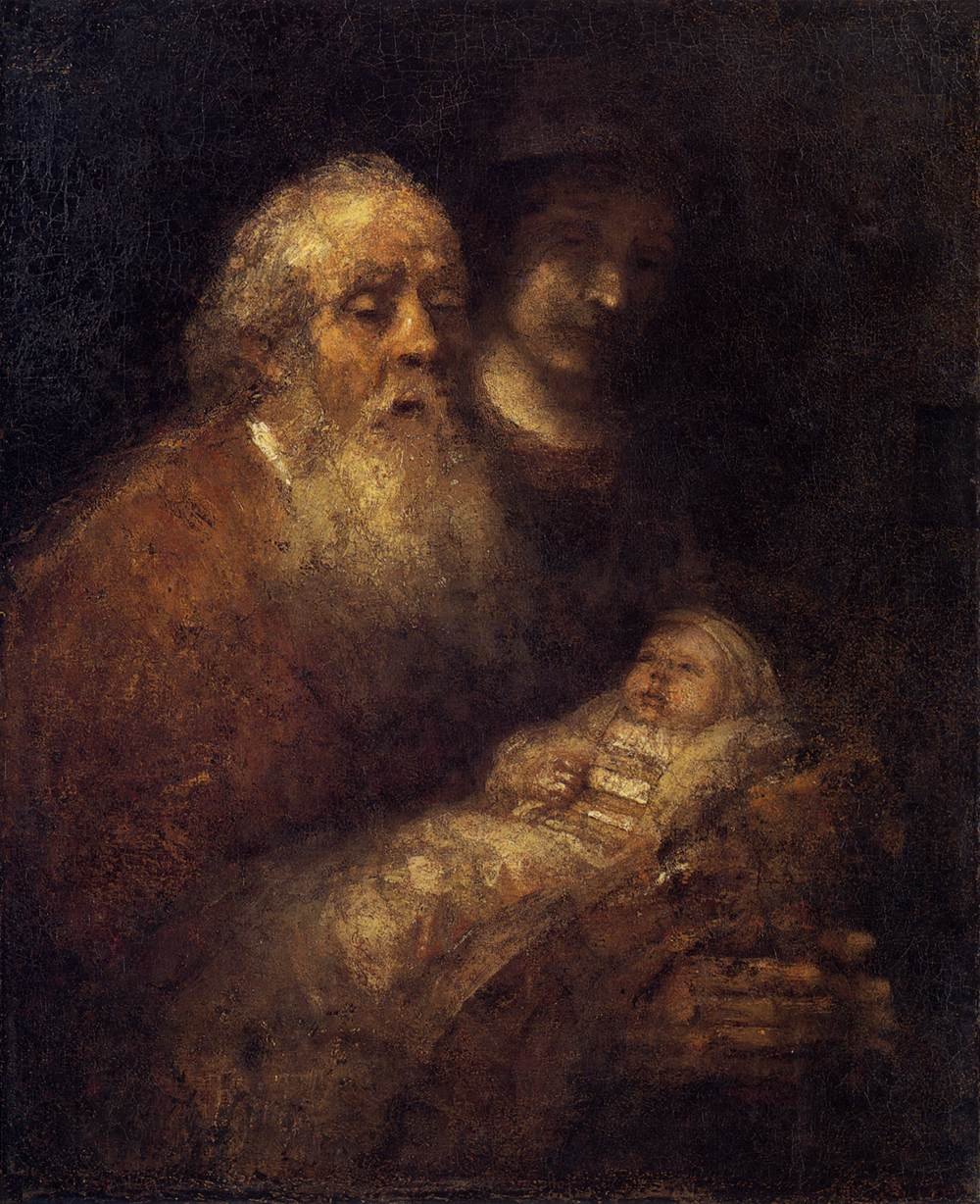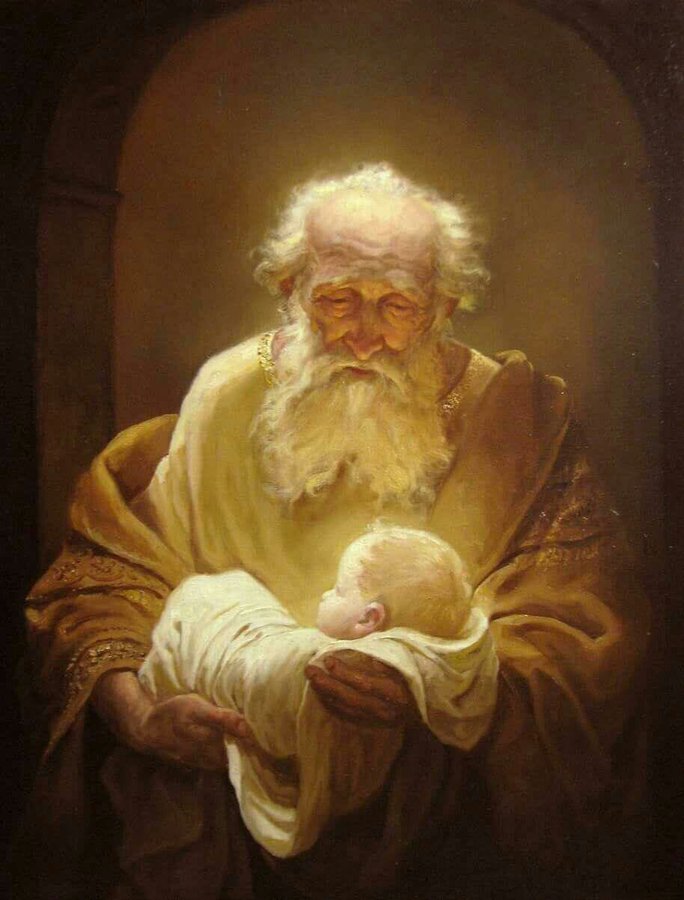
Did you ever wonder who Simeon was?
It would seem he was a mystic, known to Jesus’ family.
For we see in Luke 2:22-35, “Observing the Law of Moses, they took Jesus up to Jerusalem to present Him to the Lord.
“Now in Jerusalem there was a man named Simeon. He was an upright and devout man.”
We thus have that much to go on.
But he also seems to have been a mystic.
 “It had been revealed to him by the Holy Spirit that he would not see death until he had set eyes on the Christ of the Lord.”
“It had been revealed to him by the Holy Spirit that he would not see death until he had set eyes on the Christ of the Lord.”
True: the Holy Spirit speaks to all of us.
But this seemed special — like the revelation of Who He was to John the Baptist, also with descent of the Holy Spirit.
Anyway:
‘And when the parents brought in the child Jesus, he took Him into his arms and blessed God.”
Blessed God!
“Now, Master,” said Simeon, “you can let your servant go in peace, just as You promised.”
“Because my eyes have seen the salvation which You prepared for all the nations to see.”
Very specific, is this revelation.
“A light to enlighten the pagans, and the glory of Your people Israel.”
Then Simeon turned to Mary and said: “You see this Child: He is destined for the fall and the rising of many in Israel, destined to be a sign that is rejected.”
Through the centuries, how very true: from the faithful to emperors have been those who mysteriously and dramatically rose or fell (or rose and fell).
A true prophecy — and truer yet, that Jesus would be rejected. Was He ever!
“And a sword will pierce your own soul too,” Simeon told the Blessed Mother, “so that the secret thoughts of many may be laid bare.”
Much mystery in those final words (or at least the final ones recorded).
A sword would also pierce Mary’s heart — and would lead to the uncovering of secret thoughts. The establishment of Our lady of Sorrows!
What was meant by “secret thoughts”? And the sword? The suffering of watching her Son terrible killed?
No one really can say who Simeon was. Sometime between AD 565 and 578, a body believed to be that of Simeon was translated from Syria or Jerusalem to Constantinople,” says the online encyclopedia. “Sometime around the Siege of Constantinople (1203) the relics were seized and shipped to Venice; however, a storm forced the ship to put in to the port of Zadar on the Dalmatian coast. The relics were first placed in the Velika Gospa (Church of the Virgin) and then later translated to the Church of St. Stephen, which became known as the Sanctuary of St. Simeon the Godbearer.”
Thoughts to contemplate, in this time of contemplation, in the deepest part of the lull called summer.
